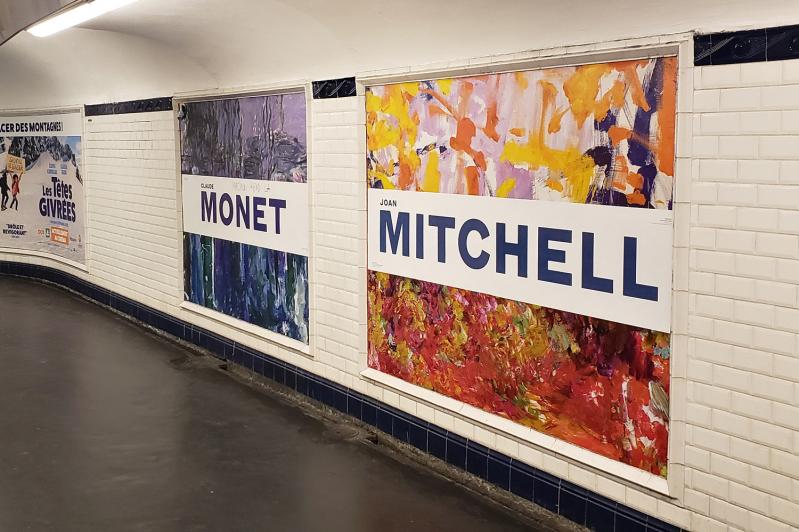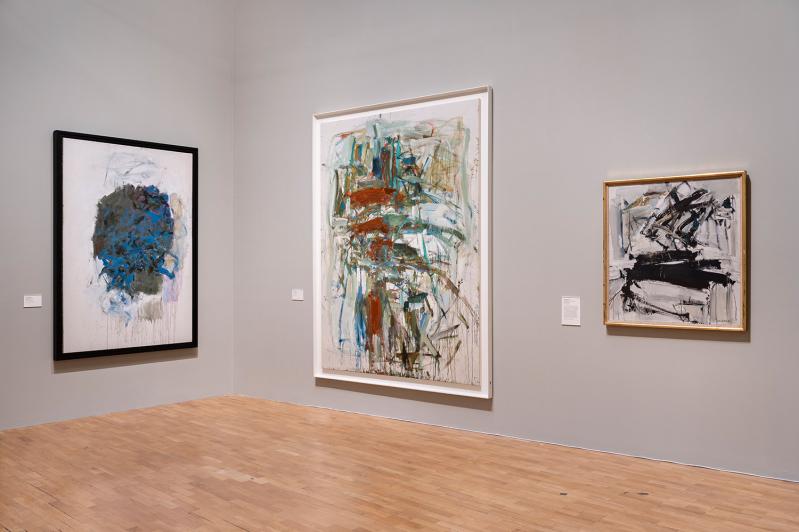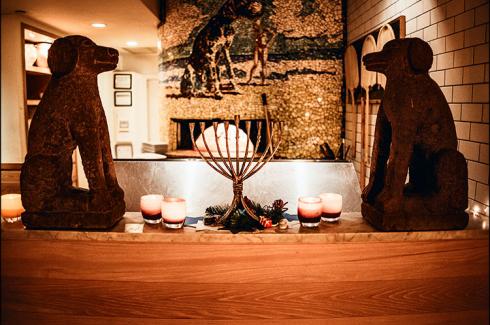Joan Mitchell is having her everything everywhere moment. On the European continent in February, she starred in the ambitious exhibition paring "Monet-Mitchell," with an accompanying retrospective, at the Fondation Louis Vuitton in Paris. In London, Whitechapel Gallery has her work in "Action, Gesture, Paint: Women Artists and Global Abstraction 1940-1970," through May 7.
Both shows vividly affirm that, group or solo, Ms. Mitchell, who spent summers in the mid-20th century living and working on the South Fork, is among the most important abstract painters of her genre, gender, and generation.
The long overdue recognition and exposure of her work to new audiences, particularly in France, where she lived for many years and worked with minimal public notice, coincided with International Women's Day. But after absorbing her work anew in Paris and London, the gender classification weakens. She's a great painter who was a woman.
The women showing at Whitechapel in London are represented in many satisfying configurations from many geographies. As in Paris, there's a strong East Hampton thread running through the show. Two superb works by Lee Krasner hang next to one by Charlotte Park, late of Springs and the wife of James Brooks. He would have been proud. He might have even acknowledged her influence on his work. (There's also a lesser-known Buffie Johnson piece from the Christian Levett Collection that makes you want more).
The Krasner and Park works, hanging cheek by jowl, show the thoughtful influence of one of the show's two major sponsors: the Pollock-Krasner Foundation in Manhattan. (The Terra Foundation for American Art is the other.) Park's pairing also validates the efforts in East Hampton to preserve the sadly decrepit Springs studio where Brooks and Park worked for so many years.

This current burst of Joan Mitchell, whose studio -- called La Tour in Vetheuil -- was nearly across the river Seine from Monet's Giverny, comes with room for interpretation outside gallery or museum walls. First, the obvious: the Louis Vuitton foundation is a personal project of France's, and the world's, richest man, Bernard Arnault. He is also a major collector of art (and now of local real estate: The Star just reported his purchase of 1 Main Street in East Hampton for $22 million).
M. Arnault is the founder of Louis Vuitton Moet Hennessy, commonly known as LVMH, the world's largest luxury-products conglomerate. Depending on which crypto firm or Silicon Valley bank went bust at the time of this writing, he is worth just over $211 billion. He also owns Joan Mitchell paintings. With the Monet imprimatur, they could well see their value rise.
Isabelle Boccon-Gibod, a French author and photographer, visited the Paris show, which was mounted in conjunction with the San Francisco Museum of Modern Art and the Baltimore Museum of Art, on Feb. 26, one day before it closed. She has spent much time on the East End and knows Ms. Mitchell's work well. "I came eager to see Mitchell, whose work I adore," she said recently. "But seeing them together gave me a fresh view of Monet's timeless brilliance, that went far beyond the show's theme."
The show had another unexpected effect from a different quarter: Five days before it closed, the Joan Mitchell Foundation threatened legal action against Louis Vuitton (the brand) for what it alleged was unauthorized use of Mitchell's work in a recent advertising campaign. The outcome remains to be seen.
Much of Mitchell's work in the Monet-paired blockbuster was produced later in her life, which ended in France in 1992. On the whole, it has less appeal than the retrospective of her work one floor below, in the spaceship of a museum building M. Arnault commissioned from Frank Gehry. Even three stunning works in their own corner at Whitechapel carry a different appeal.
Earlier works by Ms. Mitchell in the retrospective have the excitement and fresh approach associated more with the Cedar Tavern in New York -- or even the long gone Elm Tree Inn on Main Street in Amagansett in the '50s, where Larry Rivers used to play his sax.
The retrospective part of the exhibition exudes more of the early excitement of the Abstract Expressionist moment, when there were fewer moguls with their own museums. Regardless, it just feels more gin-soaked than Giverny, more linseed oil than luxe, more real and experimental, less obviously referential or, with respect for Monet, reverential. It brings us closer to her South Fork and New York friendships with Elaine and Willem de Kooning, Grace Hartigan, Miriam Shapiro, and Audrey Flack (all well represented at Whitechapel). There's more a sense of her than of Monet's influence. It can be sublime.
In fact, the retrospective work is so good as to ask, why can't Joan Mitchell show more alone? Even in New York recently, she was matched up (in good company) at Mnuchin's "Joan Mitchell-Christine Ay Tjoe." (It closed on March 18.)
Speaking of influences, there's another local hook to Mitchell's spotlight shows that's fun to note: Her influence on the late Barney Rosset, her former husband and avant-garde publisher. Rosset, the founder of Grove Press and the Evergreen Review, was a Chicago native like Joan, a one-time major East Hampton landowner, a strip-club habitue, and a tireless legal combatant to have D.H. Lawrence's "Lady Chatterley's Lover" and "Tropic of Cancer" by Henry Miller published in the United States after both books were banned here as obscene. Rosset serially divested many East Hampton acres to support free expression.
He also painted. Astrid Myers Rosset of East Hampton made a gallant effort to preserve the mural he'd painted on a wall in his Lower East Side loft about nine years ago. It was completed in his final years (he died in 2012), and stood above the loft's pool table until just before the building was sold. (See the documentary film "Barney's Wall" by Sandy Gotham Meehan and her tireless band of Rosset admirers who tried to help Astrid Rosset in her mission.)
Ms. Rosset has recalled Barney telling her one morning, before he picked up a paintbrush to begin the mural, " 'I was talking to Joan last night . . . she was a very good teacher.' "
At this dawn of ChatGPT artificial intelligence and shape-shifting realities, you wonder: What if time and gender were reversed? What if Madame Mitchell could have influenced Monsieur Monet?




